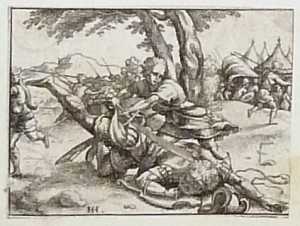Wenceslaus Hollar (1607-1677) was one of the great European printmakers of the 17th century. His oeuvre of three thousand or so prints is extremely varied – though not in terms of technique, because his medium was always etching and he never indulged in the experiments we know his contemporary Rembrandt enjoyed. Hollar’s strength lies in the detail. He manages to depict the hair and clothes of his models - especially women - with incredible refinement. His largest work, a view of London almost two and a half metres wide, gives an accurate picture of the old city, which was destroyed by fire shortly afterwards. Portraits, cities, landscapes, ships and animals - there was no subject Hollar neglected. Born and bred in Prague, as a young artist he worked in various places in Germany. In 1636 he settled in England, which became his second home. At the outbreak of the English Civil War Hollar went to Antwerp, where he stayed for eight years, during which he did what is perhaps his best work. After that he left England only once more, when he spent some months in Tangiers (Morocco).

Wenceslaus Hollar
Praag 1607 - Londen 1677











